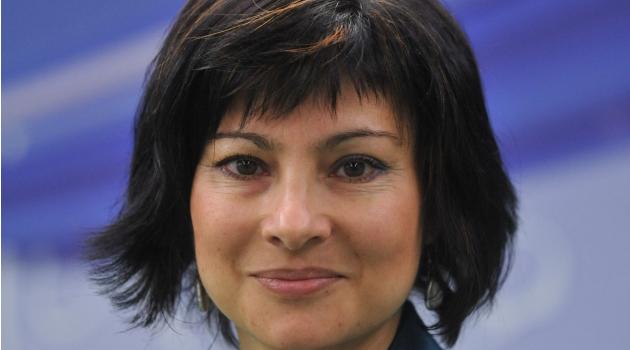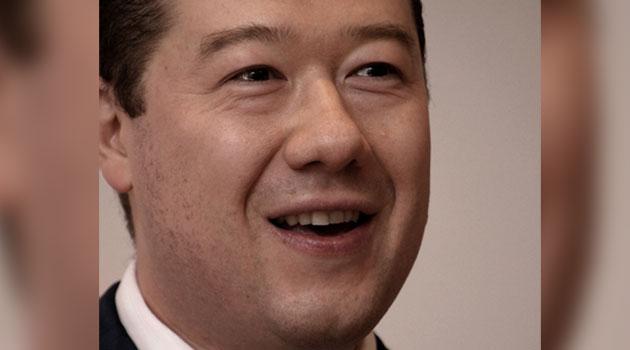Jana Horváthová: Hodonín and Lety functioned as concentration camps

Tomio Okamura is mistaken and his ignorant remarks have done further damage to his already-tarnished image. I am not very surprised, since as an historian I encounter relatively well-educated people rather often who mix up the various phases in the life of the camps that were in operation during the time of the Protectorate.
The racialized, targeted action against "gypsies" during the Protectorate was well covered-up for a very long time and for a very clear reason: So the entire action of the "final solution to the gypsy question" could take place as quietly as possible. From the start of the Protectorate until 1942, as a result of such a policy, actions against "the gypsy race" were included within the framework of the fight against so-called "asocials".
On 10 August 1940 the so-called disciplinary labor camps were opened at Hodonín (Blansko district) and Lety (Písek district) on the basis of a regulation issued by the Second Czechoslovak Republic which the Government of the Protectorate then adopted through an amendment. These disciplinary labor camps (kárné pracovní tábory – KPTs) were intended for so-called "work-shy persons" who were unable to prove that they had a regular source of income.
Primarily, however, these facilities were only for men, adult men who were 100 % healthy and therefore 100 % capable of working. The prisoners, or rather the forced laborers, were kept in these facilities only for a clearly delineated time (usually three to six months), during which time they were supposed to serve their sentences of hard labor building sections of the highways to Moravská Ostrava and to Plzeň.
Among these forced laborers there was rather a lower number of ethnic Romani men, but we do know of those Roma who were assigned to these facilities because they were marked on the lists of forced laborers with a big red C for cikán ("gypsy"). This also indicates that at the time there existed a certain racial dimension to the policy against the so-called "asocials".
The number of Romani forced laborers ranged from between 10 and 20 %, with their numbers rising in the winter, when municipalities usually did their best to get rid of inconvenient groups in the population. A case was also recorded in which a certain Moravian municipality illegally sent Romani boys (minors) to the forced labor camp, and when the fraud was discovered, the boys had to be released and returned to their community.
Compared to the later phase in the development of the camps, i.e., when the so-called "gypsy camps" were later opened at these same sites, the overall conditions of imprisonment in the KPTs were still relatively good. First of all the accommodation capacity of each camp was not exceeded during this initial phase; the total number of forced laborers never exceeded 200 people, and we must still bear in mind that these were only adult, completely healthy men, and if someone fell ill in the camp, he was sent home for treatment.
In January 1942 the camps were formally renamed "collection" camps, but only adult males were still being imprisoned in them. It bears repeating that this took place during the Protectorate of Bohemia and Moravia, i.e., a state formation whose independence was merely illusory.
That fact was manifested in the Protectorate’s total dependency on the neighboring Reich for a solution to the "gypsy question". It is no secret that all of the basic German antigypsy regulations were applied in the Protectorate, often down to their literal wording, just with a certain delay.
In the summer of 1942, the time was ripe in the Protectorate to reveal what had until then been a covert racialized action against "gypsies". On 10 July 1942, the General Commander of the plainclothes Protectorate Police issued an order on "combating the gypsy nuisance" (this had been in effect in Germany since December 1938).
On the basis of that order, the existing "collections camps" were closed and in their place, on 2 August 1942, the so-called "gypsy camps" were opened, and all of the previous prisoners of the "collections camps" were released with the exception of the "racial gypsies", who became the first prisoners of the newly-opened so-called "gypsy camps". During the first days of August, ENTIRE Romani FAMILIES were sent to these camps, including all family members, for an unspecified time.
On the basis of later developments, we know today that the Roma were actually supposed to wait in these places for the next phase of the solution to the so-called "gypsy question". That occurred in December 1942, when Heinrich Himmler issued an order (later known as the Auschwitz Decree) that applied to the entire territory of Germany and its subject lands (i.e., including the Protectorate) according to which all "gypsies and gypsy half-breeds" (irrespective of the degree of their admixture) were to be concentrated in a single location.
Soon the concentration camp at Auschwitz was chosen as that location (specifically, Auschwitz II-Birkenau) and the so-called "gypsy family camp" was opened there. All Romani people and Romani "half-breeds" from Germany and its subject territories were gradually assembled there.
In May and then in August 1942, all of the prisoners at Hodonín and Lety had been classified as "racial gypsies". The rest, who did not fit the criteria of "racial gypsies", were released from the camps just before the Roma were to be transported to Auschwitz.
Today, those who were released are practically the only survivors who can testify about their imprisonment at Hodonín and Lety, because in the vast majority of cases, those who were sent to Auschwitz either perished there, or, due to the hardships they experienced and their poor state of health, did not survive long after Auschwitz was closed. The conditions during the phase of the so-called "gypsy camps" at Hodonín and Lety were shocking merely by virtue of the fact that during the first month, the capacity of each camp (originally 200 people) was exceeded sixfold (to more than 1 300 people), making the living conditions unfit and, with the start of the winter months, appalling.
The barracks were not insulated, there was not enough clothing or shoes, the prisoners performed hard labor, their food was bad (it was proven that at Lety the staff profiteered by selling off the prisoners’ rations), there was not enough potable water or water for personal hygiene, and young children including nursing infants were imprisoned there, all of which caused outbreaks of serious epidemics of infectious diseases at the end of 1942 and start of 1943 in both places that claimed the lives first of the youngest prisoners and then of the rest irrespective of their age. A resident of the village of Hodonín, E.P., was 20 years old at the time, and remembers the situation in the camp there very well:
Their main food was potatoes, I know that because a lot of potato peels were carted away from there, the thinnest peelings without a speck of potato left on them. They supposedly were so hungry they even ate raw potatoes… . I’ll tell you, in short: Our people were the guards there, and they were the same kind of gang as those Germans. … those worst off were the kids, Štarha couldn’t keep up with the demand for children’s coffins. Every morning I saw them carting away about seven or more little coffins, without any decoration, just black. Their custom was to throw money into the graves and the gravedigger would go down in there afterward and pick up all the money."
In addition, the discipline in such camps was very harsh, and survivors testified that rather harsh punishments were carried out that definitely left their mark on the prisoners. A Romani prisoner in the Hodonín "gypsy camp", who assisted in the camp’s infirmary, F.D. (born in 1921), recalled the following:
Someone stole a rabbit from the policemen. … so there was a muster and the barracks were searched. When it wasn’t found, every tenth prisoner had to go to the bench [for a beating]. They said they would beat us until the rabbit, or mainly its skin, was found. That lasted an hour. Finally they found it [the skin], but they had planted it themselves. They said a girl had stolen the rabbit and eaten it. She was very ill, a pretty girl, the prettiest one there. She was half-German, from Liberec. … She was ill somehow, either she was or the kids [her children] were, so she hadn’t been able to make it to the mustering point. So they brought her there, we were all standing there, and she was beaten I don’t know how many times. It wasn’t possible to count or to even watch it at all… . She was beaten so badly that over the course of the next two days, half of her backside completely fell off. I know this because I was in the infirmary and there was an effort to treat her, and finally she was transported to Auschwitz, to Birkenau. She was beaten so badly that half of her backside fell off.
The Museum of Romani Culture is a state-funded organization that has been involved in documenting and researching the history of the camps at Hodonín and Lety since it was first created in 1991. Ever since then we have been building up our collections of hours of audio and video recordings of the recollections of the former prisoners of those places, which document irrefutable facts; today, unfortunately, most of those people are no longer alive.
PhDr. Jana Horváthová, the director of the Museum of Romani Culture, is an historian and museologist.
